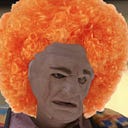Stool Validator: A Novel Mobile Application and Software for Employee Break Management, Productivity, and Healthcare Administration
Abstract: The present invention relates to a mobile application and software that uses artificial intelligence to analyze and validate the stools of employees who use the restroom while on the clock. The invention aims to improve employee break management, productivity, and healthcare administration by monitoring the frequency, duration, and quality of the stools and adjusting the pay and health coverage accordingly.
Background: Employee breaks are a common source of inefficiency and waste in many workplaces. Employees often take longer or more frequent breaks than necessary, resulting in reduced productivity and increased costs. Moreover, employee health is a major factor that affects the performance and well-being of the workforce. However, existing methods of assessing and improving employee health are often costly, invasive, or inaccurate.
Summary: The invention provides a novel solution to the problems of employee break management, productivity, and healthcare administration by using a mobile application and software that utilizes artificial intelligence to analyze and validate the stools of employees who use the restroom while on the clock. The invention comprises the following components:
- A mobile application that allows employees to take a picture of their stools and upload it to a cloud server for analysis. The mobile application also displays the results of the analysis and provides feedback and recommendations to the employees.
- A software that runs on the cloud server and uses artificial intelligence to process and validate the stools of the employees. The software uses various parameters, such as color, shape, size, consistency, and frequency, to determine the validity and quality of the stools. The software also compares the stools of each employee with their personal and average baselines, and calculates the amount and time of the stools that are considered valid or leisure.
- A database that stores the information and records of the stools of the employees, as well as their personal and average baselines, pay rates, and health coverage plans.
- A system that integrates the mobile application, the software, and the database, and adjusts the pay and health coverage of the employees based on the results of the stool analysis. The system deducts the pay of the employees for the time and amount of the stools that are considered leisure, and rewards the employees for the time and amount of the stools that are considered valid. The system also modifies the health coverage eligibility and cost of the employees based on the quality of their stools, and provides incentives for the employees to improve their stool quality.
The invention provides several advantages over the prior art, such as:
- Improving employee break management by reducing the time and frequency of unnecessary or excessive breaks, and encouraging the employees to use the restroom only when needed.
- Enhancing employee productivity by increasing the effective working hours and reducing the distractions and interruptions caused by breaks.
- Optimizing employee healthcare administration by providing a simple, non-invasive, and accurate method of assessing and improving employee health, and adjusting the health coverage accordingly.
- Training an artificial intelligence model on the stools of the employees, which can be used for various purposes, such as medical research, diagnosis, prevention, and treatment of diseases and disorders related to the digestive system.
The invention is applicable to any workplace or industry that employs workers who use the restroom while on the clock, such as offices, factories, restaurants, hotels, schools, hospitals, etc.
The invention is described in detail with reference to the accompanying drawings, in which:
Fig. 1 is a schematic diagram of the invention.
Fig. 2 is a flowchart of the process of using the mobile application.
Fig. 3 is an example of a stool analysis result displayed by the mobile application.
Fig. 4is an example of a pay adjustment notification sent by the system.
Fig. 5.1 is an example of a health coverage modification notification sent by the system.
Fig. 5.2 is an alternative example of a health coverage modification notification sent by the system.
